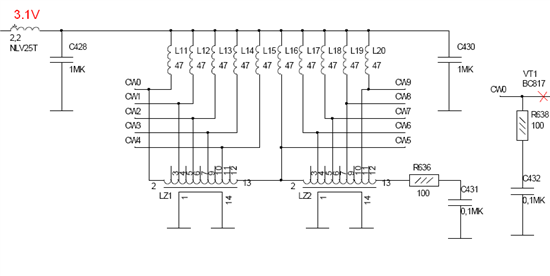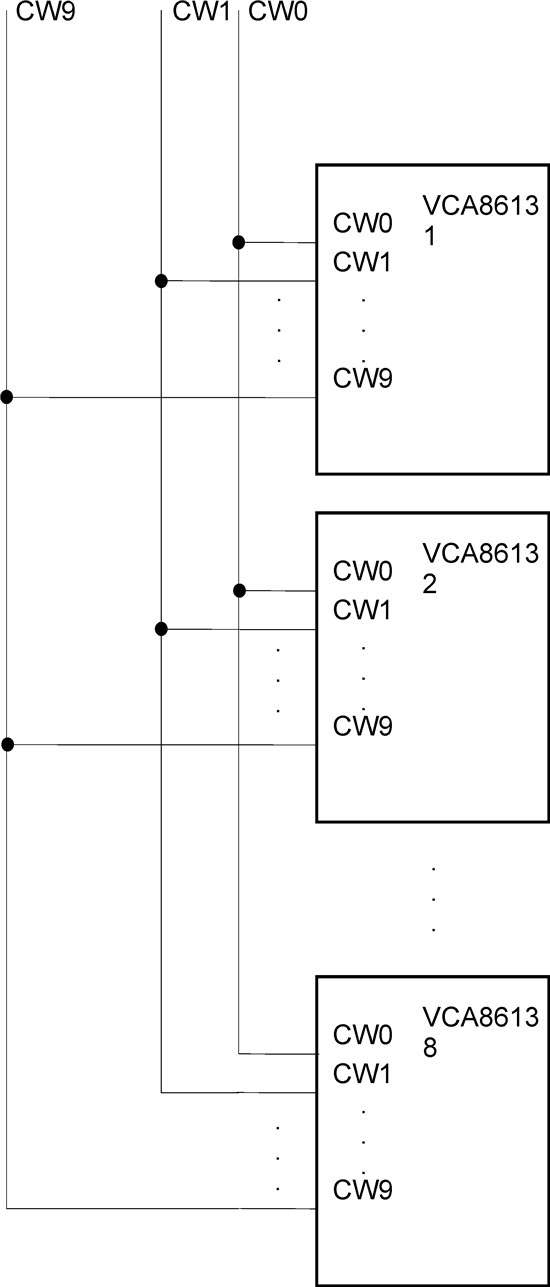We tried to use device in CW mode
http://www.ti.com/lit/ds/sbos200f/sbos200f.pdf
p.15: "The CW outputs are typically routed to a passive delay line, allowing coherent summing of the signals."
We connected outputs to delay line IC, provided 3,0 V on CW output pin and found that device CW output pin is bypassed.
But in pdf we can see info that device CW output is current output and not any info (inpedance, capacitance etc) about
these outputs parameters.
We have test. Connect from external generator signal to delay line and:
- when CW outputs are disconnected we see this signal on delay output line.
- when CW outputs are connected we practically can't see this signal on delay output line.
Delay line is passive (inductors and capasitors).
All voltages on device pins are according with pgf.



